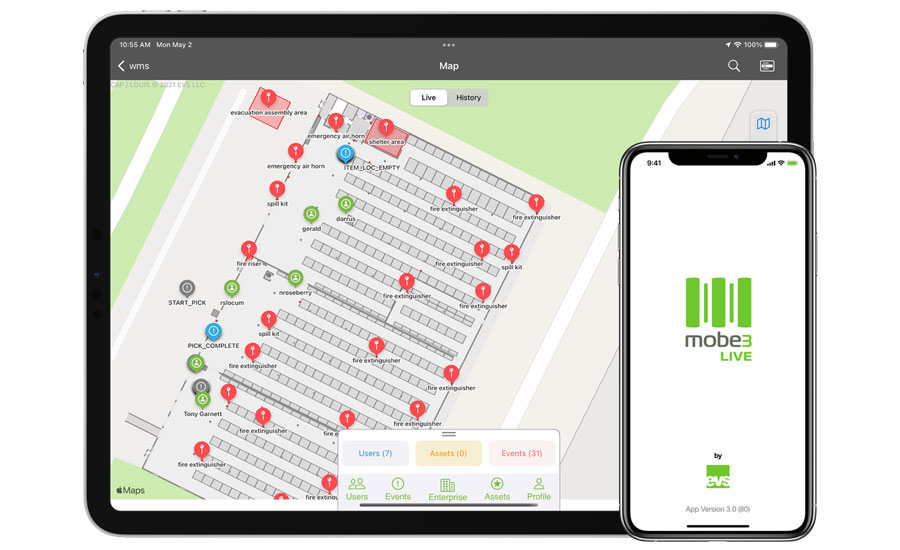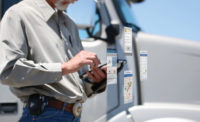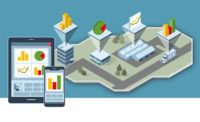Many snack and bakery companies use direct-store delivery (DSD), aka delivering products from their supplier or distributor directly to a store. This practice can help skip a retailer’s distribution center.
Route-management software, order tracking, and fulfilling mobile solutions become imperative to snack and bakery manufacturers when DSD is in play.
“Our integrations with Shopify and ShipStation let bakeries automatically intake retail customer orders into our platform and use order quantities to drive daily production needs,” says Geoff Ellis, COO, Wherefour, Petaluma, CA.
Sam Polakoff, CEO and founder, BrillDog, New Freedom, PA, says that local and regional snack and bakery businesses should use a transportation management system that helps to plan, execute, and fulfill orders and deliveries.
“Ensuring products arrive at a store or distribution center on time means products arrive fresher and further away from their expiration date. By shipping the freshest products to the end customer, whether it is a store or distribution center, customers are happier and more likely to order again from your business,” he explains.
Some snack food and bakery products include fresh fruits or other temperature-sensitive ingredients as part of their end product. These products may need to be shipped via cold chain transportation and not just any truck, Polakoff adds.
“Other products may be seasonally offered, which can add another layer of planning to your transportation and delivery plans. A transportation management system helps businesses order the right truck for the load, acquire transportation, have visibility for the delivery, track and trace the load throughout the entire shipment, and manage freight invoices,” he says.
Derek Curtis, vice president of sales retail execution, Körber Business Area Supply Chain, Minneapolis, says Körber is always introducing new features and functionality with the goal of making life easier for its end users, and that typically comes in the form of proactively driving desirable behavior.
“Historically the desired target behavior was related to driving sales, but with the ever-growing SKU portfolio and demands on route drivers, simplifying is valuable as well. Some examples of this include the inclusion of check-scanning optical character recognition (OCR) capabilities to simplify collections, expanded visibility of future sales opportunities with our promotion schedule calendar, and enhanced Scan Based Trading (SBT) with on-hand inventory capture,” he notes.
He also says that DSD operations have been moving towards cashless over the years.
“Körber has facilitated this transition by adding efficiencies, such as OCR check scan/capture, new DEX features and hardware, [and] enhancement to SBT. The trend is to support the industry as it moves away from carrying traditional currency on routes,” Curtis comments.
Polakoff says that more and more companies in the bakery and snack food industry are creating DSD programs to ensure customers have the right products at the right time.
“With a DSD program, companies save a tremendous amount of money not having to maintain a distribution center. The DSD model saves numerous hours of warehouse labor because DSD products are delivered directly to stores. In today’s market, labor is getting harder and harder to find, and this model means less labor at the warehouse is required,” he explains.
Bakery and snack food products are often fragile and subject to damage in transit. DSD helps shippers have greater control over the handling of their products to alleviate damage, Polakoff says.
“These types of products have an expiration date and must be shipped quicker than other products. By using a DSD model of shipping, customers will receive products quicker, allowing them to stay on the shelf longer,” he comments.
With a TMS, shippers get visibility into their supply chain, helping them to make better decisions about what is happening within their operations, Polakoff continues.
“Greater efficiencies are received because oftentimes the truck driver can be the one who loads and unloads the truck, requiring less labor resources. With freight audit and payment as part of the TMS, shippers can ensure they are accurately billed, and the correct payment is remitted,” he says.
Some DSD programs require route management solutions that direct drivers where to go and provide a transport plan for them to follow, he finishes.
“Route management optimizes routes so that drivers follow the shortest route to the delivery spot, taking less time and fuel. Turn by turn route management gives driving directions to a location, making it easier for the driver to find the delivery location quicker,” Polakoff says. In terms of software, Nathan Brown, chief technology officer, EVS LLC, Westminster, CO says that better software tools are being put into the hands of the workforce—tools that look and feel like modern smartphone apps. This helps organizations collect and use accurate, real-time information to increase supply chain velocity.
“Modern software needs to look and feel like the apps that users are accustomed to using in their off-work hours. Their work software could have tons of functionality, but if the users can’t access that functionality, it is useless. Ultimately, great software tools will make the users’ job easier,” Brown predicts.
Ash Matthews, quality control, development, FlexiBake, Vancouver, BC, says that modern customers know what they want: fast, easy, and transparent.
“Moving to digital tools is a great way for businesses not only to keep up with these expectations, but increase efficiency and cut costs. Our MetriX DSD app allows companies to reduce or entirely eliminate paper invoices and manual data entry by moving the delivery process onto a handheld device. Drivers can update invoices to reflect what was delivered, record stale returns and issue credits for them, report payments taken, and take signature on the delivery,” she explains.
Using a data connection, the app can sync immediately, allowing for digital invoices to be sent to the client and their account in FlexiBake’s enterprise resource planning system is updated immediately with the new information in real time, Matthews says.
Ellis notes that the availability of mobile devices that can scan and connect to small, portable printers has made bakery deliveries much easier than before.
“With mobile devices and cloud-based software, drivers can view and make changes with their customers, rather than waiting until they get back to the office,” he comments. “We’ve found this leads to better responsiveness to customer needs and less wasted product or delivery runs, and this ultimately helps our bakery users keep delivery costs lower.”

Company: Wherefour
Website: wherefour.com
Logistics Snapshot: Wholesale customers can generate and manage their own orders via a self-service B2B portal, saving bakery staff previous time dealing with order details, says Ellis. The B2B Portal can be customized to mimic the bakery's brand look. In addition, bakeries that prefer to do deliveries first and then record what happened later can import a file of their deliveries, and have inventory depleted with a full recording of which customers got which product(s). Drivers can organize their daily orders by delivery route and either batch-print invoices for each customer or combine them all into a single PDF. The lot codes of product selected for each customer will be automatically added to their invoice. Product returns can be handled quickly by scanning a lot code and either destroying the product or returning it back into inventory, and at the same time, a credit memo can be generated automatically in their accounting package.

Company: Körber
Website: korber-supplychain.com
Logistics Snapshot: The Körber solution is designed to make routes more efficient in many ways, says Curtis:
“When it comes to helping drivers, the technology aims to alleviate and streamline administrative tasks. This includes prompting them for collecting signatures, image capture of delivered goods, or store stamped invoices/POD, or customer satisfaction surveys. Logistics enhancing features include turn-by-turn route guidance, routing based on GPS and current location, automated text updates to alert customers where deliveries are geographically or with respect to delivery sequence, and automated alerts to customers to notify them their delivery is minutes away based on where the driver is currently located. All of these features enhance the efficiency and experience of the service for the end customer, and streamline tasks [with which] drivers have traditionally been burdened.”

Company: BrillDog
Website: brilldog.com
Logistics Snapshot: BrillDog provides a TMS that offers rate quotes, and buy, dispatch, and track shipping on a user-friendly dashboard, says Polakoff. The base version of the software is free, but the tool can be easily upgraded to a paid version with enhanced analytics. The BrillDog platform is developed with machine learning capabilities, so the more a company uses it, the more it can do for them. It provides real-time, cloud-based supply chain analysis, management, and actionable insights specifically for small-to-medium-sized businesses. It’s a scalable SaaS platform that easy to use and becomes more valuable the more you use it.

Company: EVS LLC
Website: evssw.com
Logistics Snapshot: mobe3 streamlines fulfillment with real-time indoor positioning and worker-directed picking, making sure that the right products get on the right delivery trucks, says Brown. There is also a complete audit trail of accountability for the inventory that goes on and off the truck, and enforcement of shelf life rules per customer.

Company: FlexiBake
Website: flexibake.com
Logistics Snapshot: With the FlexiBake ERP and MetriX solutions, businesses can achieve accessibility and flexibility, both for their staff and their clients, says Matthews.
“The MetriX Online Ordering Portal gives customers the freedom to place, view and edit their orders whenever and wherever is convenient for them. Optional features like account history, product lists, and the ability to manage their standing orders can be toggled depending on the customer’s needs for an individualized experience.”
The orders are fed directly into FlexiBake’s ERP solutions, which are available on the cloud. Users no longer need to be on-site to work in the system, and can collaborate from multiple locations. The system uses the order data to feed tools and reports that facilitate route planning, producing and packing orders, and loading trucks for deliveries.





